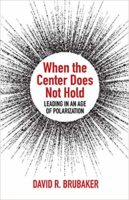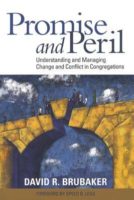
Is your congregation a fortress, a partner, a prophetic voice, or an enmeshed part of its community? How do its traditions, its membership, or political events shape its attitude toward the society around it? In a time when many people have strong feelings about changes in the wider society, they want to know and understand their congregation’s stance toward the wider culture.
Congregations assume many stances toward society. Richard Niebuhr, in his 1951 classic Christ and Culture, offered a typology of some options, recognizing that a congregation’s stance vis-à-vis its society evolves over time and with successive political regimes. For Niebuhr, Christian churches’ responses to the broader culture fell into five types:
- Christ Against Culture. This would be the stance of the monastics, the Amish, and some fundamentalist traditions. In this view, the church should be clearly separated from the world, as the ethics of Jesus run completely counter to the ethics of any political kingdom.
- Christ In Culture. This stance views culture mostly positively—or at least benignly, as in the historic mainline Protestant traditions. One common expression of this stance is civil religion, which blends Christian and national traditions.
- Christ Above Culture. Among several mediating views (between Christ against culture and Christ in culture), this perspective assumes a generally positive view of human culture, but posits that Christ is distinct from and superior to any culture.
- Christ and Culture in Paradox. Here culture is viewed more negatively, but is also seen as necessary. It approximates a “two kingdom” perspective, where earthly kingdoms are appointed by God and have an essential role but the church, separate from the state, exercises its own mandate.
- Christ the Transformer of Culture. Joel Carini suggests that this perspective views secular culture as sinful but also argues that “Christianity can build a distinctively Christian culture, transforming each of the dimensions of society for the good.” This stance is compatible with the modern movement known as the “Seven Mountain Mandate,” which seeks to bring family, religion, education, media, entertainment, business, and government under the reign of Christ.
Some scholars argue that these five pure types are an oversimplification of the wide variety of ways that congregations and other religious bodies engage the surrounding culture. D. A. Carson, in Christ and Culture Revisited, proposed that Niebuhr’s five models are better viewed as five points on a continuum.
Reframing Christ and Culture
Although Niebuhr and Carson are both writing from the Christian tradition, their typologies of how a given religious tradition might engage a changing cultural landscape are broadly relevant. I propose a reframing of Niebuhr’s five stances for congregations of multiple traditions, in response to changing political environments in the current U.S. context.
- The Fortress Congregation. This congregation perceives its role primarily as a protector of its members against a hostile society. The goal is to equip congregational members with the tools to resist the deceptions and distractions of the dominant political culture. Congregational members view the role of the state as sharply distinct from that of their religion and mainly believe that the two realms should keep their distance. Many will choose not to vote in political elections.
- The Elevated Congregation. This congregation views itself as a city on hill and a light for the nation. Its members participate in the daily life of the society, but always aware that they are a “royal priesthood” with a higher calling. Many would be pleased if a member of their congregation were elected to a political office, as they would see that person’s values and ethics as superior to the dominant perspective.
- The Engaged Congregation. This congregation understands that it is one of multiple institutions in a community and seeks to engage others as an equal partner. Congregation members serve in multiple roles in the broader community, and the congregation itself is willing to join coalitions with other organizations.
- The Prophetic Congregation. This congregation sees itself as compelled to confront a society that has gone astray and call it in a new direction. Its members choose to identify with the most vulnerable in society, and to advocate for their just and fair treatment. Many would be more likely to be arrested for a sit-in in a politician’s office than to run for office themselves.
- The Enmeshed Congregation. This congregation is indistinct from the broader society, and its members fully participate in the culture without any need to defend, separate, or distinguish themselves from other members of society. Its members do not see themselves as salt or light, but simply as part of the broth. Members participate in business, nonprofit, and political leadership without highlighting their religious affiliation.
A congregation may include members who envision the congregation’s role in different ways. As with the Niebuhr typologies, these five types can also be viewed on a spectrum—from the least engaged with the broader society (fortress) to the most engaged (enmeshed).
Shifting Stances
A congregation’s relationship with the dominant culture will be shaped by its theological tradition, its history, its context, and its current membership, and will evolve over time. More than a few congregations birthed in a separatist tradition—or even an enmeshed one—now embrace a more prophetic stance because of their evolving understanding of religion’s role in a pluralistic society.
Every congregation is a subsystem in a larger cultural system. In that relationship, the congregation over time asserts its unique identity through rituals, artifacts, teaching, and practices. The degree to which the congregation’s identity diverges from the broader culture will in large part determine the congregation’s relationship with its context.
Is your congregation a fortress, a partner, a prophetic voice, an enmeshed part of its community, or some other archetype? Perhaps the most valuable perspective is to simply be aware of your congregation’s stance and how it is changing in an ever-evolving society.
David Brubaker has consulted with organizations and congregations in the U.S. and a dozen other countries on organizational development and conflict transformation. He is the author of Promise and Peril, on managing change and conflict in congregations, and When the Center Does Not Hold, on leading in an age of polarization. David recently retired from his role as Dean of the School of Social Sciences and Professions at Eastern Mennonite University, and is now a Professor Emeritus of Organizational Studies.


